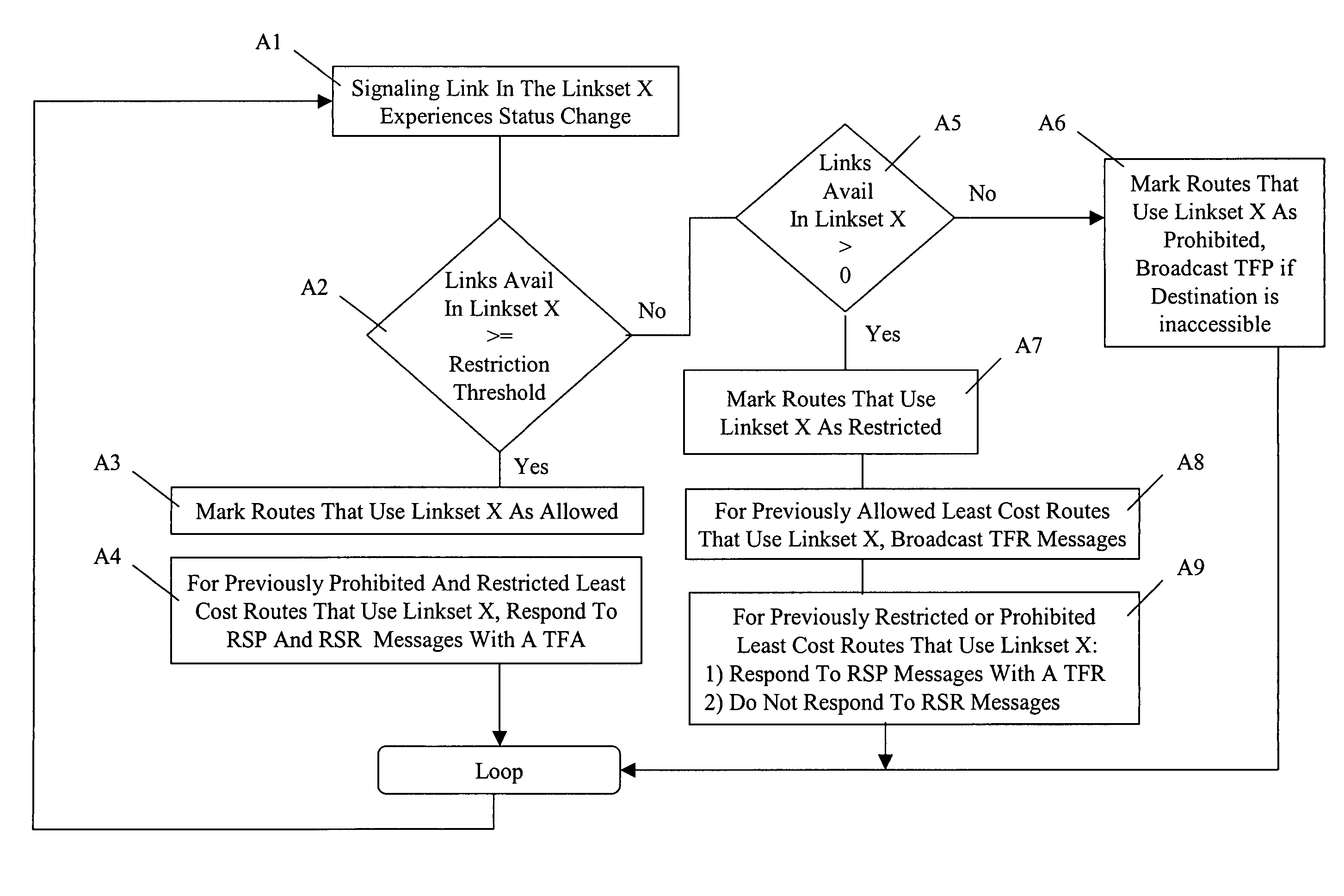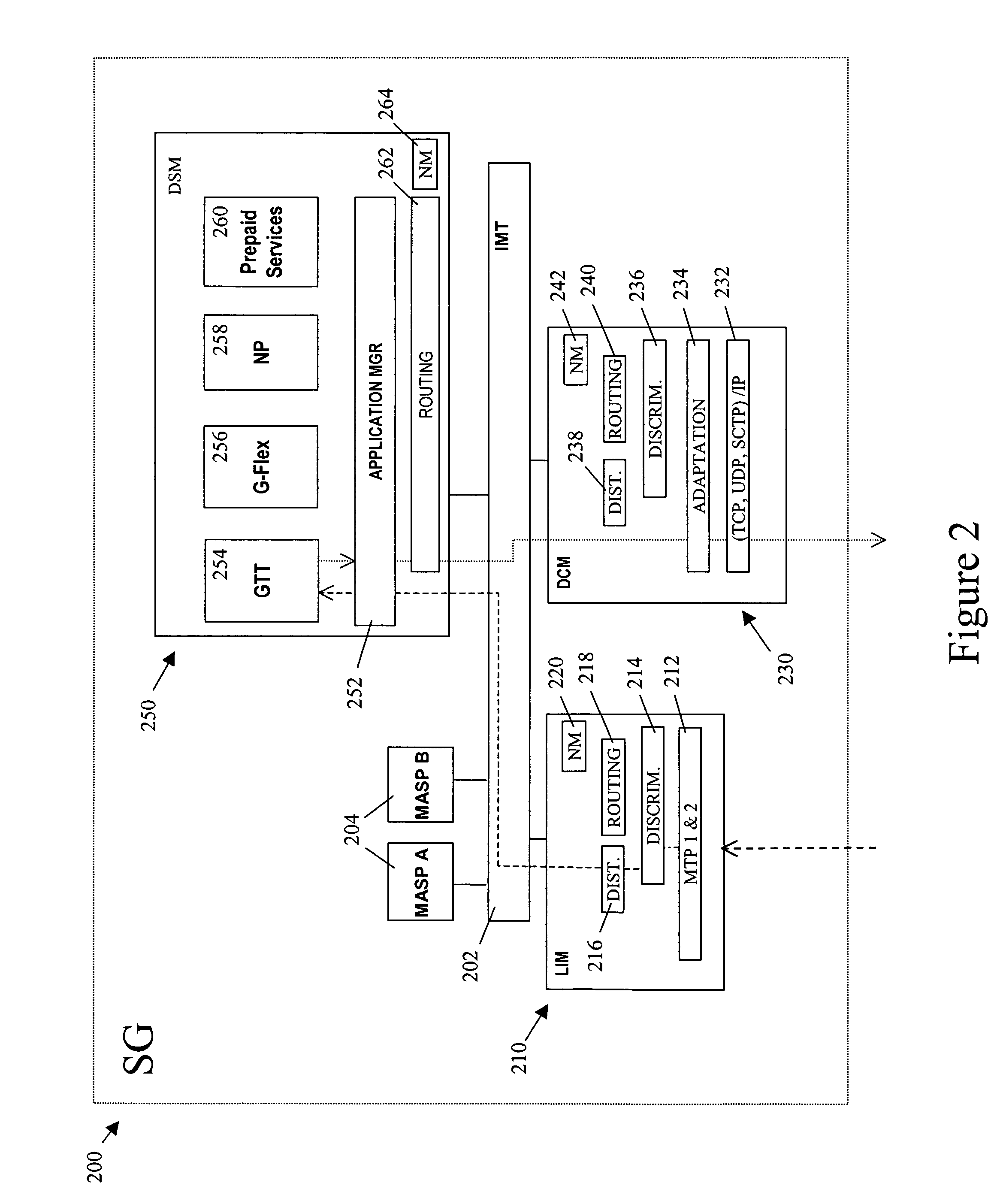Methods, systems, and computer program products for reducing signaling link congestion
a signaling link and congestion prevention technology, applied in the field of signaling message traffic management, can solve the problems of inability to achieve, congestion can have adverse effects on the signaling network, and the remaining links will become congested, so as to reduce or eliminate congestion on a recovered link
- Summary
- Abstract
- Description
- Claims
- Application Information
AI Technical Summary
Benefits of technology
Problems solved by technology
Method used
Image
Examples
Embodiment Construction
[0024]According to one aspect, the subject matter described herein includes a system and method for preventing congestion on a failing or recovering linkset caused by the processing and routing of global title translated signaling message traffic. Although the subject matter described herein is described primarily with respect to messages that have undergone global title translation (GTT), the subject matter described herein may be employed to prevent congestion on a recovering linkset caused by the routing of signaling messages that have undergone any type of network routing address translation or modification. For example, routing address translations / modifications may include those translations / modifications resulting from processing associated with number portability translation services, location register routing services, message screening and redirect services, access mediation services, prepaid subscriber services, presence service, ENUM translation service and other network...
PUM
 Login to View More
Login to View More Abstract
Description
Claims
Application Information
 Login to View More
Login to View More - R&D
- Intellectual Property
- Life Sciences
- Materials
- Tech Scout
- Unparalleled Data Quality
- Higher Quality Content
- 60% Fewer Hallucinations
Browse by: Latest US Patents, China's latest patents, Technical Efficacy Thesaurus, Application Domain, Technology Topic, Popular Technical Reports.
© 2025 PatSnap. All rights reserved.Legal|Privacy policy|Modern Slavery Act Transparency Statement|Sitemap|About US| Contact US: help@patsnap.com



